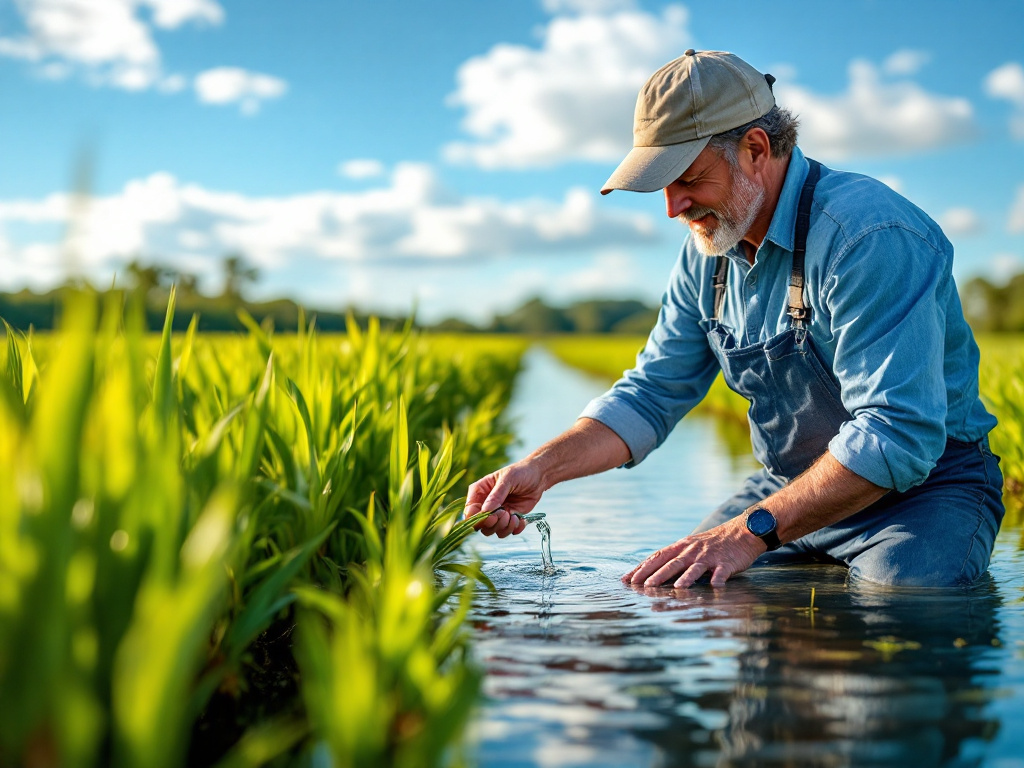Image generated by flux-ai.io & content generated by ChatGPT Version 4o-mini
Sustainable Farming Practices: A Path to Clean Water and Healthy Communities in Alachua County
In Alachua County, where agriculture plays a vital role in our local economy and culture, a recent study highlights the importance of adopting Best Management Practices (BMPs) in farming. These practices not only promise to enhance farm productivity but also ensure the protection of our precious water resources.
So, what exactly are BMPs? Simply put, they are strategies that help farmers use resources like water and soil more efficiently while minimizing environmental impacts. Think of them as “best practices” that guide farmers in making choices that benefit both their crops and the environment. In a region where farming is not just about planting and harvesting, but also about running a successful business, BMPs could be a game-changer.
Why BMPs Matter for Us in Alachua
Alachua County is home to a diverse agricultural landscape, with many farms growing everything from vegetables to livestock. With our unique sandy soils and fluctuating rainfall patterns, the way we manage water is crucial. BMPs are designed to help farmers in our area maintain crop health while ensuring that nutrients and water do not negatively affect our local waterways, such as the Santa Fe River and the many lakes around us.
For instance, many farmers in our county rely on irrigation systems to ensure their crops receive enough water. BMPs recommend regular maintenance and calibration of these systems to ensure they deliver water efficiently. This means less water waste and healthier crops—benefits we can all appreciate, especially as climate change leads to unpredictable weather patterns.
Local Benefits of BMP Implementation
Implementing BMPs can have multiple benefits for our community. Cleaner water means safer drinking sources and healthier ecosystems, which is especially important for families and wildlife alike. Additionally, when farmers adopt efficient practices, they can reduce their costs—savings that can eventually be passed on to consumers like you and me.
Moreover, many farmers are already facing challenges such as rising costs, labor shortages, and competition. BMPs can help them navigate these hurdles while still producing high-quality food. For example, practices like precision agriculture, which uses GPS technology, allow farmers to plant crops more efficiently and apply the right amount of fertilizers at the right times. These methods can lead to higher yields and less waste, benefiting both the farmer’s bottom line and our local economy.
Investing in Our Future
While some BMPs may require initial investments—like upgrading irrigation systems or planting buffer strips to protect waterways—farmers can often receive financial assistance from state and federal programs. This cost-sharing can make it easier for local producers to adopt these sustainable practices.
As more farmers in Alachua County embrace BMPs, we can expect to see tangible improvements in water quality and agricultural productivity. The ongoing research into these practices will help us better understand their effectiveness and how we can further support our farmers in maintaining sustainable operations.
Conclusion
In conclusion, the findings of this study emphasize the crucial balance we must strike between agriculture and environmental stewardship. By supporting our farmers in adopting Best Management Practices, we can help ensure a sustainable future for Alachua County—one where clean water, healthy food, and thriving rural communities go hand in hand. As residents, we all have a role to play in this journey, whether through our choices at the grocery store or our support for local agricultural initiatives. Together, we can cultivate a healthier community for generations to come.
References
FOR368/FR437: The Basics of Agricultural BMPs in Northern Florida and Southwestern Georgia. (n.d.). Ask IFAS – Powered by EDIS. https://edis.ifas.ufl.edu/publication/FR437

